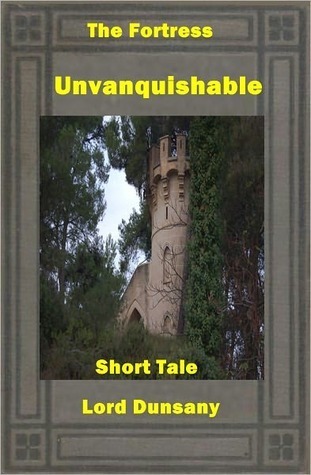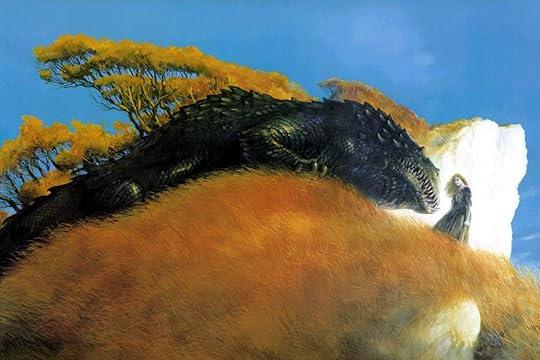What do you think?
Rate this book


17 pages, Kindle Edition
First published January 1, 1908


Outside he felt the night air on his face, and found that he stood upon a narrow way between two abysses. To left and right of him, as far as he could see, the walls of the fortress ended in a profound precipice, though the roof still stretched above him; and before him lay the two abysses full of stars, for they cut their way through the whole Earth and revealed the under sky; and threading its course between them went the way, and it sloped upward and its sides were sheer.Or this:
Then Leothric smote upon the Porte Resonant with Sacnoth, and the echo of Sacnoth went ringing through the halls, and all the dragons in the fortress barked. And when the baying of the remotest dragon had faintly joined in the tumult, a window opened far up among the clouds below the twilit gables, and a woman screamed, and far away in Hell her father heard her and knew that her doom was come.This is more like a prose poem--the point of passages like this are just to evoke a mood and an image. I can see in my head how this would be portrayed in a metal music video or in the animated short. Who is the woman? Who is her father? Doesn't matter, we're on to the hundreds of camel-rider guards who flee screaming when Leothric tells them he has Sacnoth.
The Lord Gaznak has desired to see you die before him. Be pleased to come with us, and we can discourse by the way of the manner in which the Lord Gaznak has desired to see you die.Later, there's a scene in a banquet with queens and princes and two hundred footmen that carry messages between Leothric and the nearest of the princes. After a short discussion, the prince tells the footmen to seize him, the message gets passed down the line, and when the two nearest get close, Leothric says, "This is Sacnoth" at which point the footmen say, "It is Sacnoth" and scream and run.
"It is Sacnoth. AAAAAaaaₐₐₐₐₐ"until the message gets back to the queens and princes and they run too. There's no way I'm supposed to read this and not think it's a joke. The story does an excellent job of being both a good fantasy story and funny, the same way the Discworld books do. No wonder so many weird fiction authors in the first half of the 20th century loved Dunsany.
"It is Sacnoth. AAAAAaaaₐₐₐₐₐ"
"It is Sacnoth. AAAAAaaaₐₐₐₐₐ" x 98